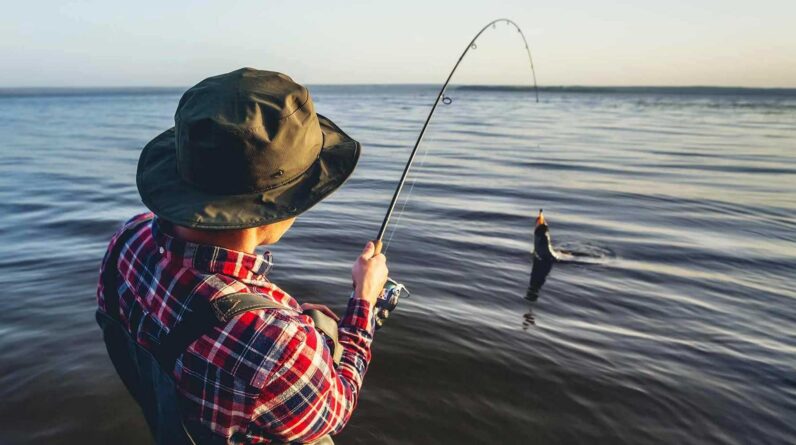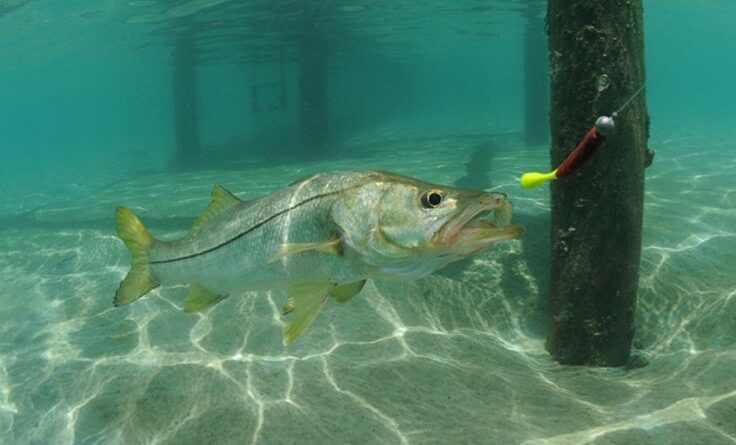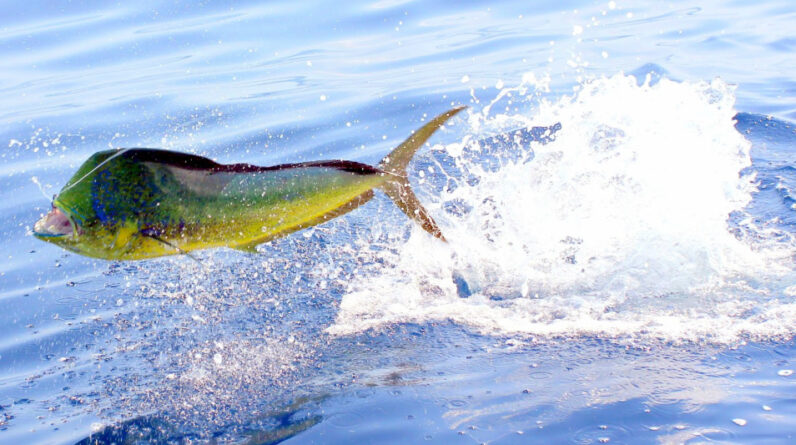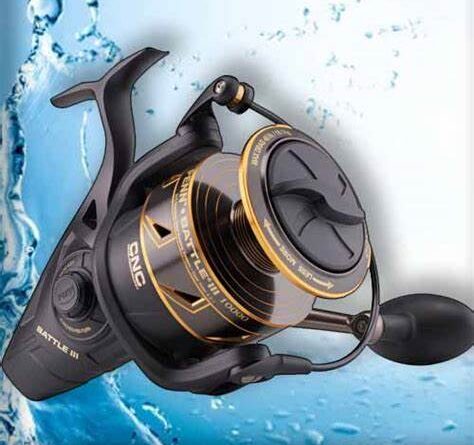Penn Battle III Review: If you’re shopping for a robust, mid-priced spinning reel that can handle everything from light freshwater bass work to nearshore saltwater fishing, the Penn Battle III is a reel you’ve probably seen on shop shelves, in anglers’ hands, and across countless online forums. Penn built a reputation with heavy-duty gear for big fish; the Battle III aims to bring durability and value to everyday anglers. But does it deserve the label “best all-around spinning reel”?
In this long-form review, crafted by the Cheerfulfisherman.com team, we’ll dive deep into everything you need to know about the Penn Battle III. From its detailed specifications, overall feel, and performance in both freshwater and saltwater, to maintenance tips, common issues, and side-by-side comparisons with direct competitors—we’ll cover it all. We’ll also explore whether the Battle III is truly the right spinning reel for your tackle box. Without question, the Penn Battle III remains one of our absolute favorites for anglers who want reliability, strength, and all-around versatility in their fishing gear.
Quick verdict
The Penn Battle III is a workhorse: affordable, rugged, and versatile. It’s not the lightest or the most feature-packed reel on the market, nor is it the absolute smoothest for ultra-delicate finesse work — but for anglers who want durability and predictable performance across a wide range of species and conditions, the Battle III is one of the best value picks. For surf, inshore, and heavier freshwater uses it’s a clear winner. For light finesse techniques or anglers who demand featherweight smoothness, look elsewhere.
Who this reel is for (and who it isn’t)
Good fit:
- Anglers who need a single reel for freshwater and nearshore saltwater.
- Budget-conscious anglers who want long-term durability.
- Boat anglers, surfcasters, and new anglers who value simple, rugged gear.
- Anyone pairing with medium-power rods for bass, redfish, snook, smaller tuna, or heavy inshore work.
Not ideal for:
- Ultralight trout or panfish setups — it’s a bit overbuilt for superfine applications.
- Tournament bass anglers or competition finesse anglers who demand the smoothest drag and lowest weight.
- Big offshore bluewater anglers chasing marlin or giant tuna — go heavy-duty conventional or big spinning reels instead.

Key specs at a glance
Note: specs vary by size (1000–8000). Below are the general design highlights common to the Battle III line.
- Body material: Full metal body (diecast aluminum body and rotor on most sizes)
- Spool: Aluminum spool with line capacity rings
- Drag: HT-100 carbon fiber drag washers (sealed drag in larger sizes)
- Bearings: Typically 6 sealed stainless steel bearings + instant anti-reverse
- Gear ratio options: Multiple ratios depending on size (e.g., 5.6:1, 6.2:1, etc.)
- Handle: EVA or rubberized knob depending on market/size
- Anti-reverse: Instant anti-reverse bearing
- Weight: Moderate — varies by size (example: 2500 ≈ 10–11 oz / 280–310 g range depending on spec)
- Colors/finish: Matte black with red/wash accents (aesthetic varies)
(These are generalized specs — specific models and regional SKUs may have slight differences.)
Design & build quality
Penn designed the Battle III to be a robust, all-purpose reel. The full metal body (in most sizes) keeps internal gear geometry aligned under pressure — a big plus for durability and drag consistency. The rotor is solid and resists flex, which anglers appreciate when loading big runs or when fighting thick structure.
The aluminum spool is machined rather than stamped on many models, which improves strength and helps the braid seat properly. Overall finish is utilitarian: matte black with subtle branding. It isn’t trying to be flashy — it’s built to work.
Ergonomics are sensible: the handle is comfortable for long sessions, bite-resistant, and available in left-hand or right-hand retrieve (market dependent). The bail arm is sturdy and closes positively; it’s not the lightest bail you’ve ever flicked, but it will take abuse.
Takeaway: heavy, solid, and built to last — not a weight-weenie but not clunky either.
Drag system: types, feel, and real-world behavior
Penn equips the Battle III with HT-100 carbon fiber drag washers, a material known for heat resistance and consistent stopping power. In practice:
- Smoothness: The drag breaks smoothly from light to heavy settings, with little stick-slip under normal loads.
- Power: Generous maximum drag for the reel class — it can handle strong runs from hard-fighting inshore species.
- Heat tolerance: Carbon drag reduces fade when you’re forcing fish or if they repeatedly run. For longer fights with big runs (e.g., big bluefish or small tuna), it holds up better than basic fiber drags.
A small negative: on some Battle III sizes anglers report the drag can feel slightly “notchy” at very low settings (finesse anglers may notice). But for most uses where you need reliable stopping power and heat resistance, the Battle III’s drag is excellent.
Gear train & gearing ratios
The gear trim and gear train on Battle III are engineered to balance strength and retrieve speed. Penn equips the Battle III with solid brass main gears and reliable pinion gearing. Depending on the size you choose, gear ratios commonly fall into the 5.6:1–6.2:1 range — a good middle ground that balances power and speed.
What that means in practice:
- Lower ratios (e.g., 5.6:1) deliver more cranking power — good for heavy lures, deep cranking, or when you need torque to pull fish from structure.
- Higher ratios (e.g., 6.2:1) provide slightly faster line pickup — helpful for faster retrieves and when using lures that require brisk action.
Penn’s gear durability is solid; you shouldn’t worry about gear stripping under regular use.
Bearings, spool, and line management
The Battle III uses sealed stainless steel bearings (commonly 6 + instant anti-reverse). Sealed bearings prolong life in saltwater conditions compared to open bearings.
Line management includes:
- Braid-ready spool lip on most sizes: braid lays well and cast distance improves if you spool with braid (especially lighter lures).
- Line capacity rings: useful for quickly checking how much backing you have left.
- Rotor balance & oscillation: the oscillation is designed to promote even line lay. In practice, the Battle III lays line evenly, reducing bird-nesting and improving casting consistency.
One note: if you plan to use ultralight braid on longer casts, adding a thin monofilament backing or using a smooth braid helps avoid potential slip on the spool when using very slick braided lines.
Sizes and line-capacity breakdown
Penn typically offers the Battle III in a range of sizes from small freshwater options to large inshore models. Common sizes and their typical recommended uses:
- 1000–2000: Ultralight freshwater or really light inshore work (limited selection in some markets)
- 2500: The most versatile — perfect for bass, trout, light inshore species.
- 3000–3500: Great for heavier freshwater and medium inshore — redfish, sea trout.
- 4000–5000: Heavy inshore, light surf, and larger freshwater species.
- 6000–8000: Surfcasting, heavier braid capacities, and larger inshore/offshore work.
Example line capacities (approximate, size 2500):
- Mono: 200 yd / 6 lb (numbers vary based on brand specs)
- Braid: 240 yd / 10 lb (again, example figures — consult product label)
Always match reel size to rod power and target species. A 2500 on a beefy surf rod is mismatched; a 4000 on an ultralight rod will feel oversized.

Performance testing — freshwater
I’ll summarize typical real-world freshwater results anglers report and expect:
Bass (smallmouth & largemouth):
- Smooth retrieves, good hooksetting feel, and drag to wear down fish. The Battle III’s ergonomics make long days comfortable — you can fish crankbaits, swimbaits (smaller sizes), and jigging setups without worry. For heavy swimbaits you’ll want a larger size and lower gear ratio for torque.
Panfish & trout:
- The reel is slightly overbuilt for panfish but performs admirably for larger trout. Finesse anglers may want something lighter with a feathered drag for microadjustments.
General casting distance:
- Braid on a Battle III casts well, especially when combined with a quality rod and good spool tension. The spool lip and spool design help produce competitive casting distances for the class.
Overall freshwater take: versatile, reliable, and durable. It’s a great do-everything reel if you want one reel to do multiple freshwater jobs.
Performance testing — saltwater & durability
The Battle III shines in nearshore and light saltwater:
Inshore species: redfish, snook, small to medium tuna, jacks, and stripers — the reel handles these well when matched with the correct size. The sealed bearings and carbon drag help resist corrosion and drag fade.
Surf & beach fishing: larger Battle III sizes (4000–8000) make solid surf reels. The metal body and spool resist flex when you’re fighting a big run or casting heavy baits. The drag has enough teeth to stop aggressive surf species if you set it up properly.
Durability: Many anglers report multi-season reliability with minimal issues when rinsed and maintained. The sealed drag and bearings reduce the risk of salt intrusion, but regular maintenance is still critical.
Saltwater caveat: While the Battle III is corrosion-resistant, it is not truly “saltwater proof.” Rinsing after every saltwater use and occasional disassembly + grease/cleaning will extend life significantly.
Casting, retrieving & noise
On casting: the Battle III casts well with both mono and braid. The spool design combined with a responsive bail means fewer backlashes than cheap spools. Light lures cast acceptably but if you’re into ultra-light tackle, a lighter reel will feel better.
On retrieving: the handle gives a solid grip and the power transfer from gear to handle feels direct — no mushy play. Some anglers report a slightly grainy sound under heavy loads, but nothing that indicates a structural problem — more a sign the gears are working hard. Noise levels are acceptable for the class.
Strength & drag heat testing
In real use, the HT-100 drag holds well during repeated runs. If you’re forcing fish close to shore or boat, the drag remains consistent; heat buildup is less of a problem than with basic fiber drag washers. However, in long sustained runs by larger pelagics, the maximum drag will eventually be exceeded (as expected) — this is still a mid-range reel, not a powerhouse offshore machine.
For anglers pushing drag hard (surf, big inshore, occasional bluefish), consider using a slightly larger size and use larger models with higher line capacity and more drag teeth.

Corrosion resistance & maintenance
Corrosion resistance: sealed bearings and quality seals help, but the reel is not maintenance-free. Rinse with fresh water after saltwater use, but do not blast with high-pressure water (that forces salt into seals). Instead:
- Rinse gently or soak in a bucket with fresh water, then rotate the handle and bail slowly to allow displaced salt to exit.
- Dry with a towel and air dry fully.
- Wipe with a light oil on the metal external parts (avoid over-oiling the drag).
- Periodically (seasonally) disassemble to deep clean and re-grease gears and check drag washers.
Internal lubrication: use quality reel grease on gears and light oil on bearings as needed. Use carbon-safe drag washers and avoid getting grease on drag surfaces.
Maintenance frequency: for regular inshore use — rinse every trip, deep maintenance every 3–6 months depending on use.
Common issues & troubleshooting
No reel is perfect. Here are commonly reported Battle III issues and what to do:
- Notchy low-end drag: Some users notice stickiness at very light drag settings. Solution: add a thin carbon layer break-in, or use a slightly different line type/backing; maintenance may smooth it out.
- Slight rotor wobble after years of heavy use: usually fixable by bearing replacement and re-tightening.
- Bail springs wearing over time: replaceable and inexpensive.
- Line slip on spool with very slick braid: add a mono backing or use a tighter arbor knot.
Most of these are normal wear items and fixable with standard reel maintenance.
How the Battle III compares to rivals
Comparisons are the meat of decision making. Below are short stacks against common competitors.
Penn Battle III vs. Shimano Stradic (or Shimano ULTEGRA/STRADIC variants)
- Smoothness: Stradic tends to be smoother, especially at the high end (Shimano’s engineering and bearing tune).
- Durability: Battle III is tougher for brute saltwater abuse; Stradic is lighter and more refined.
- Price: Battle III typically undercuts Stradic — a big value point.
- Verdict: If you want absolute smoothness and light weight, choose Shimano. For bulk durability and price, Battle III wins.
Vs. Daiwa BG
- Durability & salt tolerance: Both are strong; Daiwa BG often has a slightly better feel and more modern rotor styling.
- Value: Both are in the value / mid-range category. Choice often comes down to personal brand preference and specific size offerings.
- Verdict: Comparable — personal fit and feel will decide it.
Vs. Pflueger President
- Smoothness & weight: Pflueger President is generally lighter and smoother in some sizes.
- Durability: Battle III has the edge in heavy saltwater abuse.
- Verdict: President for light finesse, Battle III for heavy mixed use.
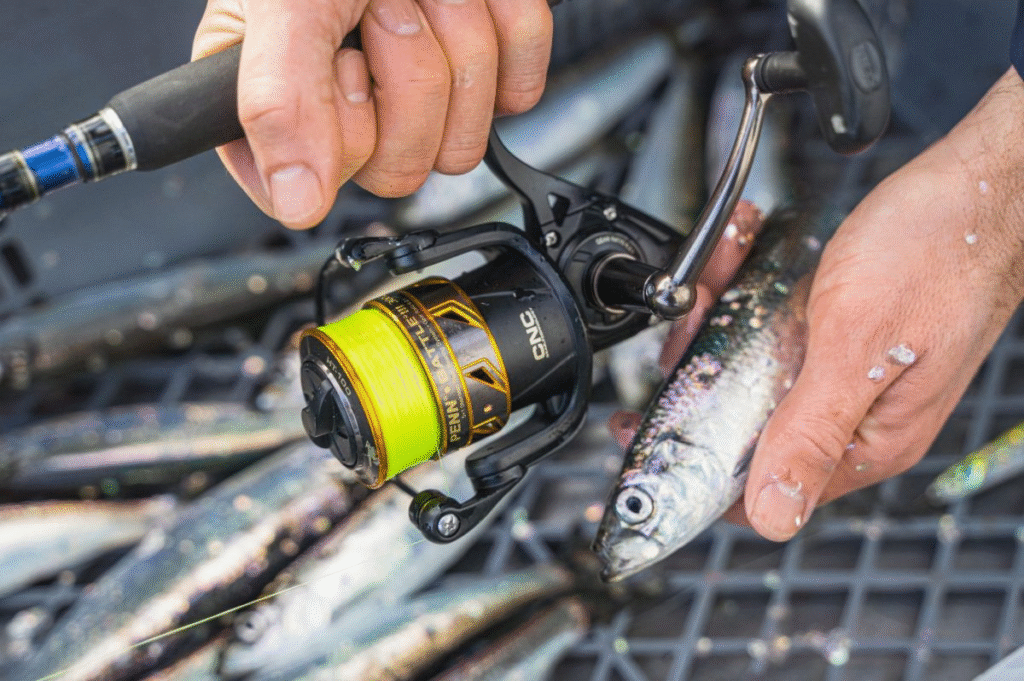
Pairing suggestions — rods, lines, lures
The right rod and line pairing will make a Battle III reel excel.
Pairings by size:
- 2500 Battle III: 6’6″–7′ medium-light to medium power rod; 6–12 lb mono or 10–20 lb braid. Lures: crankbaits, small swimbaits, spinnerbaits, light jigs.
- 3000–3500: 7′ medium to medium-heavy rod; 10–20 lb mono or 20–30 lb braid. Lures: larger swimbaits, jigs, topwater plugs.
- 4000–6000: 7’6″–9′ medium-heavy to heavy rods; 20–50 lb braid for surf and heavy inshore; lures: big jigs, live baits, surf rigs.
Line suggestion: braid is excellent for casting distance and sensitivity — use braid with a mono or fluorocarbon leader for abrasion resistance and shock absorption.
Buying tips & what to look for (new vs used)
Buying new: buy from authorized dealers to ensure warranty coverage. Check for:
- Correct model/size for intended use.
- Included spare parts (sometimes includes spare washers or extra handle knobs).
- Warranty length (Penn typically offers a reasonable warranty; check regional specifics).
Buying used: inspect for:
- Smoothness of retrieve (no grinding).
- Clean drag behavior (even break).
- Corrosion or pitting on spool lip or handle threads.
- Proper operation of bail and anti-reverse.
Price negotiation tip: if the reel shows surface corrosion or pitting, either ask for a big discount or walk away — pitted spools reduce casting efficiency and indicate long-term corrosion.
Frequently asked questions (FAQs)
Q: Is the Penn Battle III saltwater safe?
A: Yes — it’s built with sealed bearings and corrosion-resistant components. But it’s not maintenance-free: rinse after saltwater use and maintain regularly.
Q: What Battle III size should I get for bass?
A: For most bass fishing, a 2500 is the sweet spot. If you cast bigger soft plastics or use heavier braid, consider a 3000.
Q: Can the Battle III handle braided line?
A: Absolutely. The spool is braid-ready, but consider adding mono backing if using very slick braid to avoid spool slip.
Q: How does the Battle III drag hold up?
A: Strong and heat-resistant thanks to HT-100 carbon washers — excellent for its class.
Q: Are replacement parts easy to find?
A: Yes. Penn parts are widely available online and through tackle shops.
Q: Is there a Battle IV or newer version?
A: Penn periodically updates lines; always check latest model releases if you want the newest features.

Final verdict: Is the Penn Battle III the best all-around spinning reel?
Short answer: It depends on your priorities.
If your priorities are durability, value, and the ability to fish both freshwater and inshore saltwater without constant worry — yes, the Penn Battle III is one of the best all-around spinning reels in the mid-range market. It won’t be the lightest, nor the absolute smoothest reel for technical finesse, but for the vast majority of anglers who want one reliable reel for many jobs, it’s an excellent choice.
Why you might choose it:
- Strong, heat-resistant drag
- Metal body and spool for long life
- Sealed bearings for improved saltwater resilience
- Excellent value vs. performance tradeoff
Why you might not:
- If you need ultralight finesse performance, pick a lighter, smoother reel.
- If you need a reel for big offshore species, choose a larger conventional or high-capacity spinning reel.



